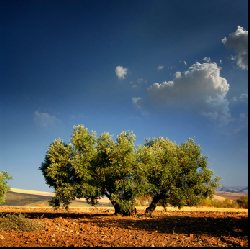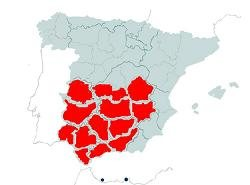|
Spanish Olive Oil
Spanish olive oil is one of Spains best kept secrets and an essential part of Spanish gastronomy. So much so that there is even a breakfast dish that is no more than bread and olive oil.
Origins:In common with other mediteranean countries (where 95% of the worlds olive oil is produced) a large part of Southern Spain is given over to cultivating olive groves. The agricultural effort centers on three regions:
Many farmers of the same village normally choose to pool the produce in order to split the transport costs of collecting the olives and taking them to the presses. Today the majority (99%) of olive oil extraction and pressing is done by industrialised companies although in the villages themselves its rare to find a family that doesn't process its own, or buy in from neighbours, their olive oil.
Production, Extraction and grades:
As with wine there are regions that have greater fame and a certain prestige for their olive oil and Jaen in Andalucia has this in Spanish olive oil circles. The truth of the matter is that in this day and age the vast majority of the olives taken to the factories in Jaen come from far outside the province. Having said that anyone driving to Andalucia on the main A-4 motorway from Madrid will be assailed by the unique smell of olive oil presses as soon as they pass into Andalucia. Within Spain, and indeed the rest of the world minus the USA, olive oil is broken down into four varieties as determined by the International olive oil council which is headquartered in Northern Madrid. These four varieties of Spanish olive oil are determined by
This comes direct from the Olive being pulped and pressed and must have less than 0.8 degrees of acidity. At the same time the qualified tasters have to award a grade of 6.5 points or higher.
Virgin olive oil:
Olive oil:
Olive pomace oil:
|